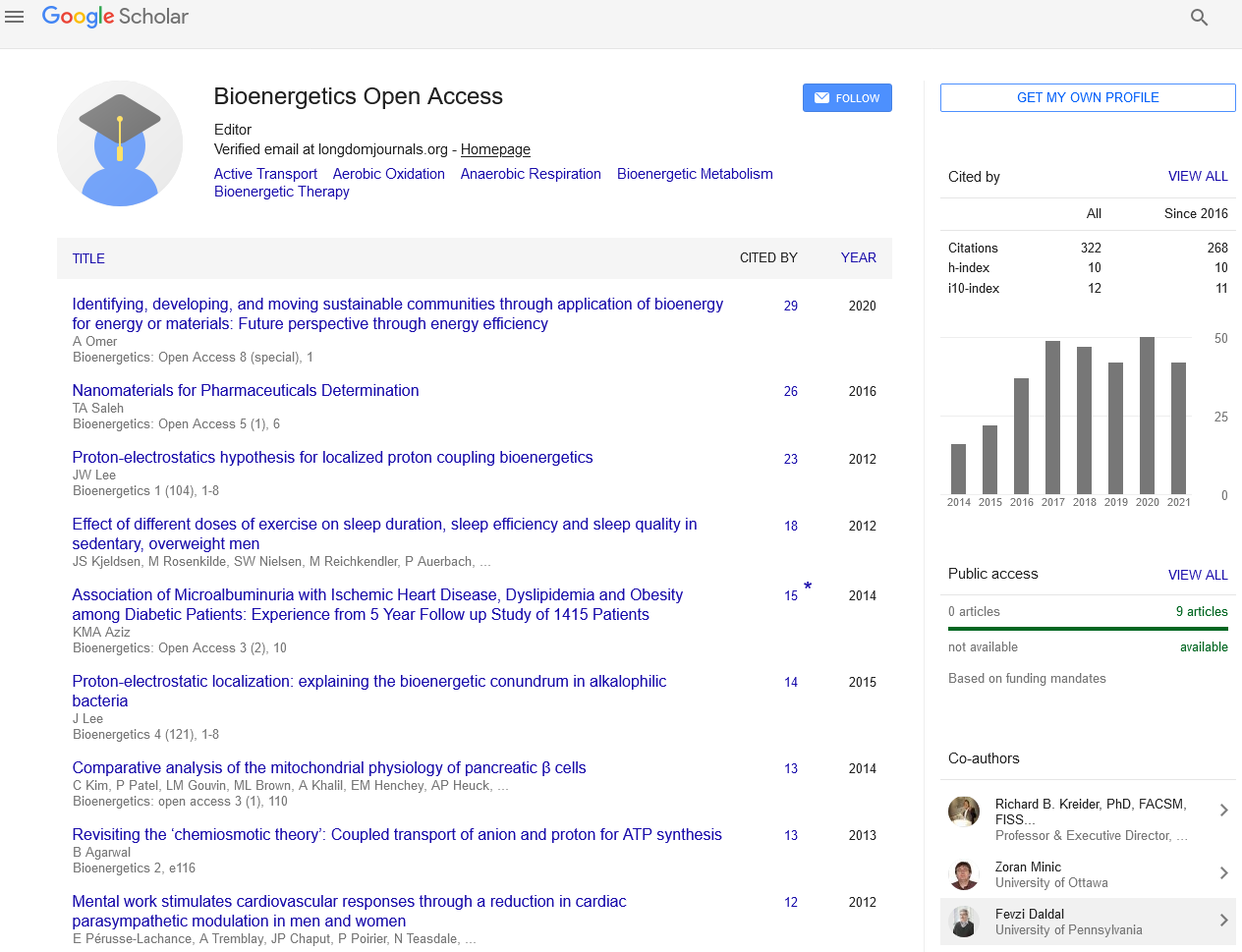Indexed In
- Open J Gate
- Genamics JournalSeek
- Academic Keys
- ResearchBible
- RefSeek
- Directory of Research Journal Indexing (DRJI)
- Hamdard University
- EBSCO A-Z
- OCLC- WorldCat
- Scholarsteer
- Publons
- Euro Pub
- Google Scholar
Useful Links
Share This Page
Journal Flyer

Open Access Journals
- Agri and Aquaculture
- Biochemistry
- Bioinformatics & Systems Biology
- Business & Management
- Chemistry
- Clinical Sciences
- Engineering
- Food & Nutrition
- General Science
- Genetics & Molecular Biology
- Immunology & Microbiology
- Medical Sciences
- Neuroscience & Psychology
- Nursing & Health Care
- Pharmaceutical Sciences
Abstract
Proton-Electrostatic Localization: Explaining the Bioenergetic Conundrum in Alkalophilic Bacteria
The decades-longstanding energetic conundrum of alkalophilic bacteria as to how they are able to synthesize ATP has now, for the first time, been clearly solved using the proton-electrostatics localization hypothesis. This is a major breakthrough advance in understanding proton-coupling bioenergetics over the Nobel-prize work of Peter Mitchell’s chemiosmotic theory. The widespread textbook Mitchellian proton motive force (pmf) equation has now been significantly revised. Use of the newly derived equation results in an overall pmf value (215~233 mV) that is more than 4 times larger than that (44.3 mV) calculated from the Mitchellian equation for the alkalophilic bacteria growing at pH 10.5. This newly calculated value is sufficient to overcome the observed phosphorylation potential ΔGp of −478 mV to synthesize ATP in the bacteria, which can now explain the 30-year-longstanding bioenergetics conundrum. This finding may have fundamental implications not only in the science of bioenergetics but also in understanding the importance of water to life not only as a solvent and substrate but also as a proton conductor for proton coupling energy transduction.

